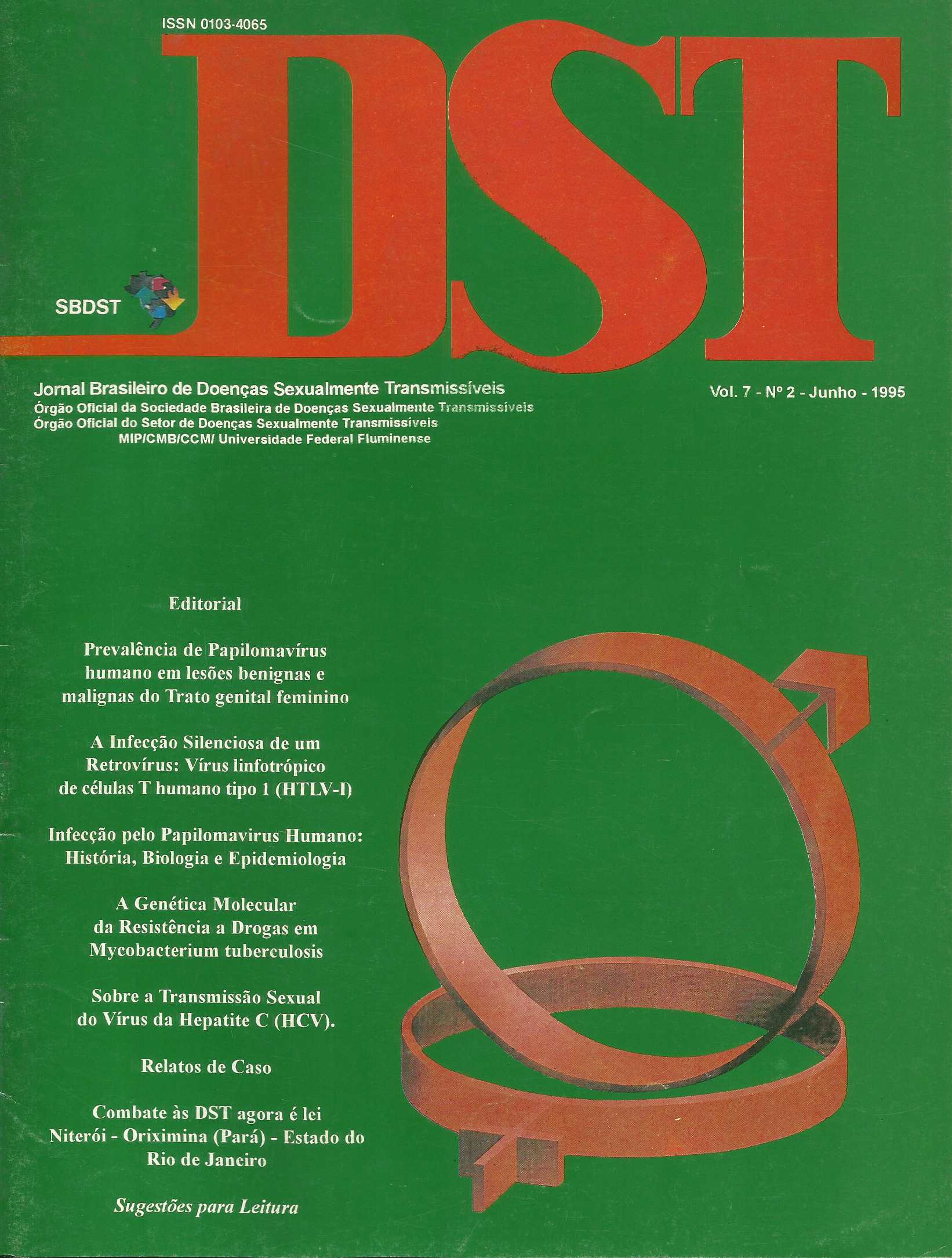Prevalência de Papilomavírus humano em lesões benignas e malignas do trato genital feminino
Keywords:
Papillomavirus, HPV, ín silu hybridizationAbstract
In the last years. human papilomaviruses (HPVs) have been implicated as possible etiologic agents of anogenital cancers, especially HPVs types 16 and 18. recognized as oncogenic genomes. ln arder to determine the prevalence ofHPVs DNA in female genital lesions. 35 biopsies from pacients attending Hospital Luiza Gomes de Lemos (INCa) and Setor de Doenças Sexualmente Transmissíveis (UFF) were studied. The speci mens were evaluated by histopathologic cri teria and in situ hybridization (lSH). Procedures to ISH included the use of biotinylated probes specific to HPVs types 6, 11. 16 and 18. Regarding the prevalence of the types. we detected HPV 16 in 39.4% oftliebiopsies. HPV 6 in 34.8%. HPV 18 in 19.7%and HPV 11 in 6.1 % of ali the biopsy specimens. HPV 6 were exclusively found alone in benign lesions such as condyloma or CIN 1. ln premalignant and malignant lesions. high risk HPVs 16 and 18 were invariably found. It is noticeable that a high rate of low grade lesions presented these oncogenic viruses. Hence, the early detection of oncogenic HPVs in initial lesions is of great value since it offers the possibility of a closer and more accurate clinicai and therapeutic procedure to prevent transformation of these lesions into cancers. Associated risk factors for HPV infection were studied. The early onset of sexual activity presented significant correlation with HPV infection and the severity of the lesion. Race did not showrelation to virai infection. although a greater number ofwhite women attended the Hospitais. Finally, HPV in situ hybrid.ization offers the possibility of early detection and typing, of oncogenic HPV g,enomes in potentially premalignant lesions, and thus is considered by usas an efficient too! for cancer prevetion.












